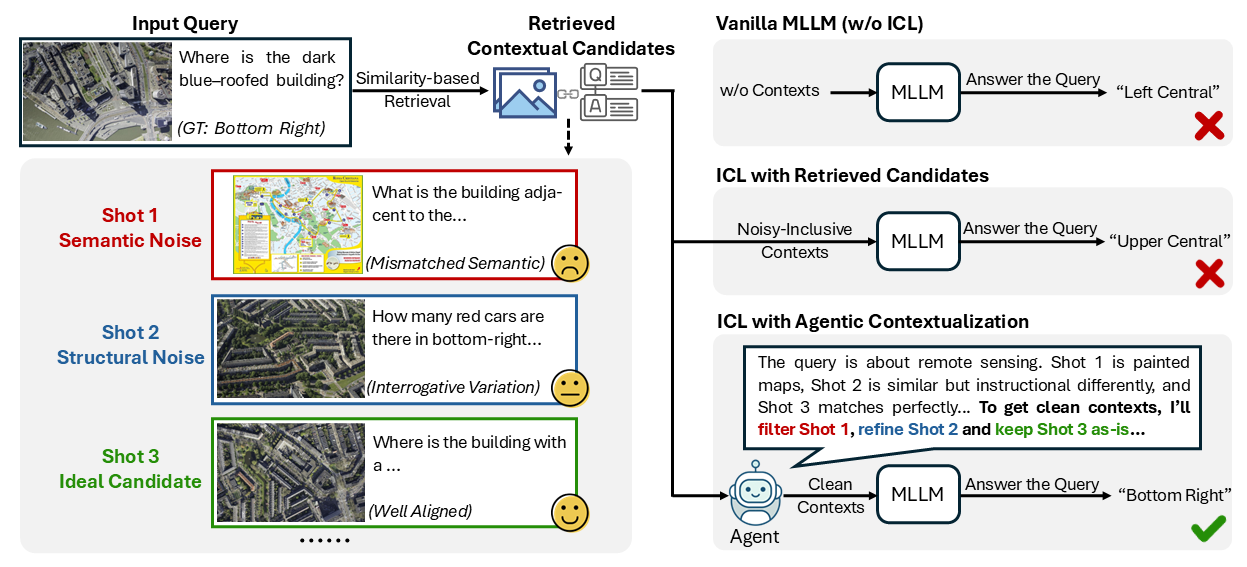Recent advances demonstrate that multimodal large language models (MLLMs) exhibit strong multimodal in-context learning (ICL) capabilities, enabling them to adapt to novel vision-language tasks from a few contextual examples. However, existing ICL approaches face challenges in reconciling scalability with robustness across diverse tasks and noisy contextual examples: manually selecting examples produces clean contexts but is labor-intensive and task-specific, while similarity-based retrieval improves scalability but could introduce irrelevant or structurally inconsistent samples that degrade ICL performance. To address these limitations, we propose ContextNav, the first agentic framework that integrates the scalability of automated retrieval with the quality and adaptiveness of human-like curation, enabling noise-robust and dynamically optimized contextualization for multimodal ICL. ContextNav unifies context management and noise-robust contextualization within a closed-loop workflow driven by graph-based orchestration. Specifically, it builds a resource-aware multimodal embedding pipeline, maintains a retrievable vector database, and applies agentic retrieval and structural alignment to construct noise-resilient contexts. An Operational Grammar Graph (OGG) further supports adaptive workflow planning and optimization, enabling the agent to refine its operational strategies based on downstream ICL feedback. Experimental results demonstrate that ContextNav achieves state-of-the-art performance across various datasets, underscoring the promise of agentic workflows for advancing scalable and robust contextualization in multimodal ICL.

